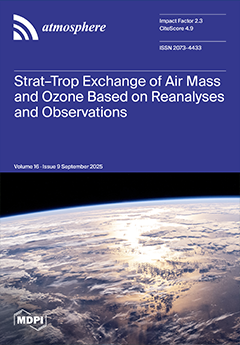This study examined the temporal changes and dispersion of potential sources of the six criteria air pollutants, namely, particulate matter with an aerodynamic diameter of less than 2.5 and 10 μm (PM
2.5 and PM
10), nitrogen dioxide (NO
2), sulfur dioxide (SO
2), carbon monoxide (CO), and ozone (O
3), in eastern Xinjiang, China, during the COVID-19 period in summer 2020 (16 July to 29 August ). Compared to the same periods in 2019 and 2021, the mean concentrations of all pollutants, except for SO
2 and O
3, and the air quality index (AQI) were lower in 2020 (relative changes: NO
2 48.3–54.4%, PM
10 35.8–49.6%, PM
2.5 19.3–43.5%, CO 16.5–34.8%, AQI 17.2–29.4%), which can be attributed to the reduced anthropogenic activities. Compared to the period before the lockdown in 2020 (16 June to 15 July), the mean NO
2 concentration showed the largest decrease during the lockdown (47.9%), followed by PM
2.5 (32.7%), PM
10 (37.6%), and CO (15.4%). In contrast, there were only minimal changes in O
3, with the mean concentrations falling slightly by 7.56%, and the mean concentration of SO
2 increased by 10.4%. The decrease in NO
x and the dry climate could have hindered O
3 formation, while vital industrial activities in eastern Xinjiang probably maintained SO
2 emissions. In the subsequent recovery period (30 August to 28 September), the mean NO
2 concentration increased the most at 59.3%, which was due to the rapid resumption of traffic-related emissions. During the lockdown in 2020, the diurnal profiles of PM
2.5, PM
10, NO
2, and CO concentrations showed lower peak concentrations in the morning (09:00–11:00) and evening (20:00–22:00), demonstrating a significant reduction in traffic-related emissions. The lower O
3 and higher SO
2 peak concentrations may have resulted from lower NO
x levels and higher electricity consumption due to the “stay-at-home” policy. The analysis of the distribution of potential sources showed that O
3 generally originated from widespread source areas, while the other pollutants mainly originated from local emissions. During the lockdown period, the source areas of PM
2.5 and PM
10 were more dispersed, with an enhanced contribution from long-range transport.
Full article





